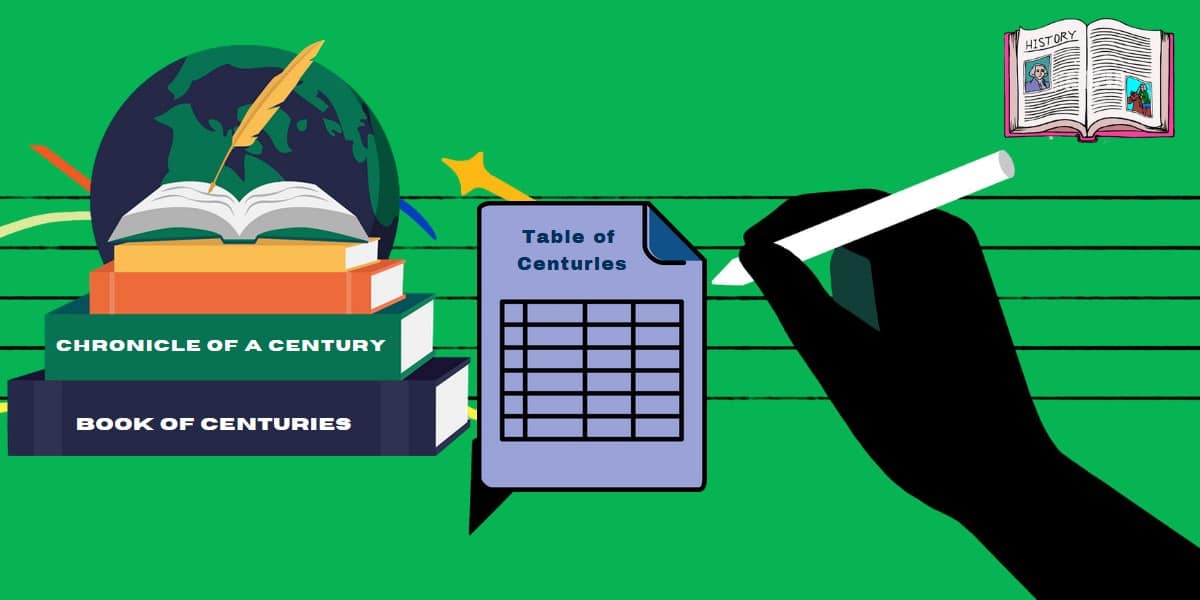
Dark Helmet: What am I looking at? When does this happen in the movie?
Sandurz: Now. Whatever you’re looking at now, is happening now.
Dark Helmet: Well, what happened to then?
Sandurz: We just passed it.
Dark Helmet: When?
Sandurz: Just now.
Dark Helmet: Well, go back to then.
Sandurz: We can’t.
Dark Helmet: Why not?
Sandurz: We already passed it.
Dark Helmet: When will then be now?
Sandurz: Soon.
— Spaceballs
The past, the present, the future, oh my! Everything that has happened in the past has led to the present and prepares us for the future. It does not matter if you are talking about a huge event, like George Washington becoming the first President of the United States or a minor event, like Slots Play Casinos coming online. Both events happened in the past, so, therefore, they are both a part of history.
Most people hate the study of history. A lot of teachers teach history as a memorization exercise: Memorize this name; Memorize this date. The interrelationship of the different names and dates is missing. How did these events affect society? That part of the education gets left out. I won’t even begin to talk about 90% of the knowledge forgotten 24 hours after the test.
A Table of Centuries and a Book of Centuries are two ways to help children understand the interrelationship of different historical events, make it personal, and, hopefully, remember it longer.
How Do I Create a Table of Centuries?
What is a Table of Centuries?
Envision a massive piece of paper. It can either be three poster boards taped lengthwise, one right after another, or else you can just use a large roll of paper. The X-axis is long (3 poster boards wide), and the Y-axis is much smaller (1 posterboard high).
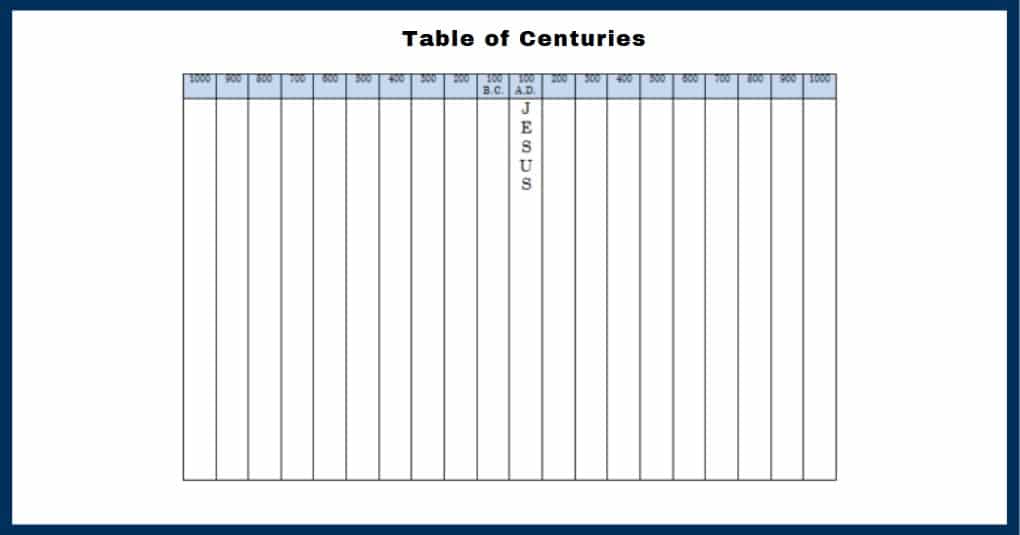
Find the middle point and mark that point the starting point (zero) — although, technically, there is no year zero. Time goes from 1 B.C.E. (Before Common Era) to 1 C.E. (Common Era). From the middle point, make 21 columns going to the right to represent the C.E. centuries. Then, again, from the central location, make 20 columns going to the left to represent the B.C.E. centuries.
Each column gets the heading of “100”, “200”, “300” … “1900”, “2000”, “2100” (on the right side). The left side is the same, but going down (dates are counted backward from zero for B.C.)
As the student learns about history, either pictures or short phrases are placed in each column to represent the event that happened. A Table of Centuries is for kids between Kindergarten and 4th grade. The idea is to get significant events, and NOT to get bogged down in the details.
- England’s history begins around the year 1000. (1000 column)
- America was discovered in 1492 by Columbus. (1400 column)
- The first slave came to the United States in 1619 (1600 column)
- First US President in 1789 (1700 column)
- Slavery was abolished after the civil war (1800 column)
- No more “separate, but equal (unequal)” in the US, 1968 (1900 column)
- First Black person elected President of the United States (2000 column)
If we count the mistreatment of Blacks with the whole “separate, but equal (unequal),” a child can easily see the 300 years of slavery that Whites did against Blacks in the US. If you then put that date until the first Black President (a Black person voted into the highest office in the US), one could argue that it was reality 400 years of slavery.
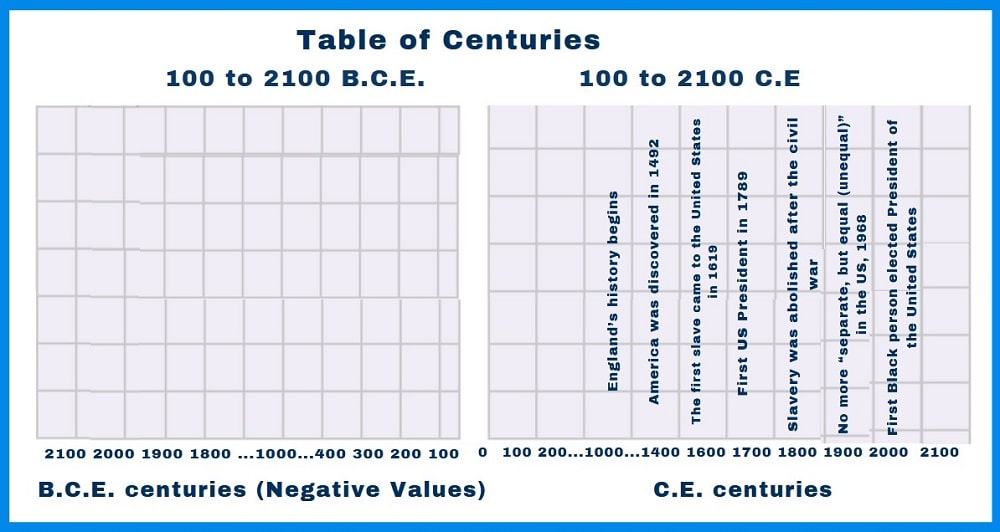
It is easy to see through a simple visual representation the long history of slavery in the US compared to how long the country has been in existence compared to how long other events happened in the world.
It is through these simple representations of history that appear on one very long continuous piece of paper that small children (below 5th grade) gain a beginning understanding of history and the relationship of one historical event to a different historical event.
How to Create a Book of Centuries?
What is a Book of Centuries?
A Book of Centuries is around a 100-page book, where each two-page layout represents a century.
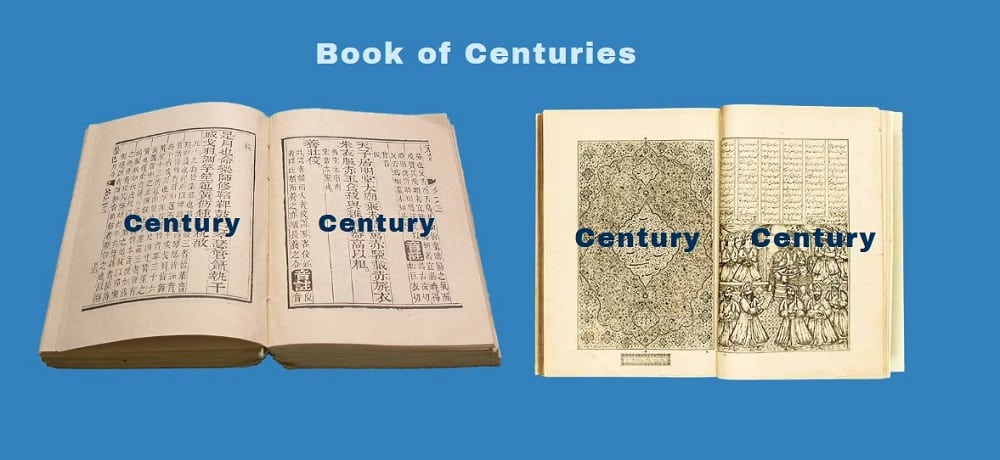
With the table of centuries, we did not worry too much about dates beyond which 100-year period the event happened. The Spanish Inquisition happened during the 1400s, and World War II occurred during the 1900s. The student was born in the 2000s, but mommy and daddy were born during the 1900s.
With a Book of the Century, history is not only broken down into centuries but in 5-year periods.
Note for Current Modern History: The exact labels can be modified to suit your needs. The US elects presidents every 4-years, while Mexico elects Presidents every 6-years. So a US student may make the labels every 4-years, while a Mexican student may make the labels every 6-years.
Step 1 – Setup the Two Page Layout for Each Century
Start a Book of Centuries no earlier than 5th grade.
Use the first 3 two page layouts for prehistory. One page could be “History according to the creation story.” Another page two page layout could be “History according to the Big Bang Theory.”
Starting at 2000 B.C.E. for every two-page layout, write at the top of the page the 100-year increment. Keep working until you get to 2000 C.E. – 2100 C.E.
Step 2 – Setup the Right-Side Page, the Detailed Dates
On the right page, add the specific dates. The labels can either be every five years or every ten years. If you are using every ten years, mark your dates every three lines.
When working with Current Modern History, you may want to adjust the date labels to correspond with the change of leadership in your country.
Setup 3 – Setup the Left-Side Page, the Illustration, and Overview
The left-side page will contain illustrations, notes, and anything else that you feel is important that does not fit into a timeline representation, line by line format.
This page is left blank, so there is no setup.
Chronicle of a Century
Chronicle of a Century is not one that Charlotte Mason recommends, but it is one that I would recommend.
This format comes from the book “Chronicle of the 20th Century”. Every page represents one month. So the first page would be 1900 January. The next page would be 1900 February. Etc., until the Present.
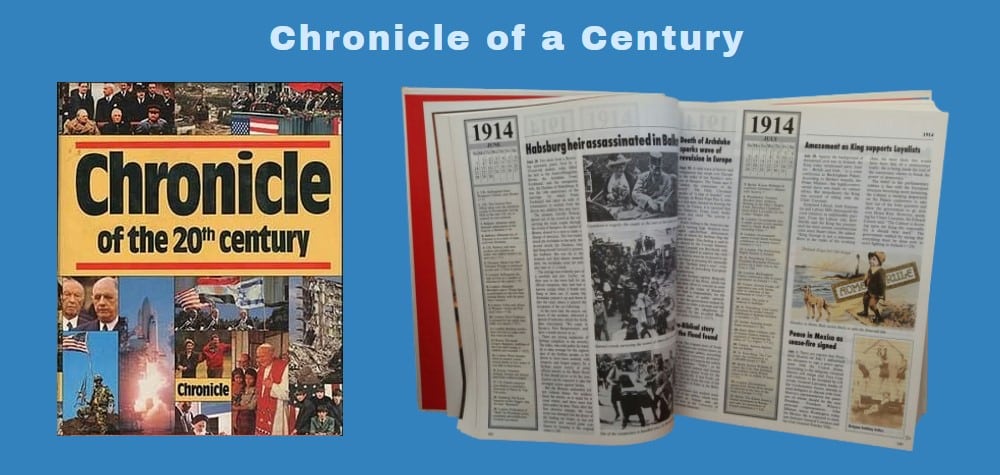
The page contains a timeline for the month. Each day would be just one or two sentences. Then the rest of the page looks like newspaper articles. They can either be actual news articles (copied word for word from real newspapers) or else they can be articles your student writes themselves. Regular publications have images and text, so, therefore, your students’ pages should have pictures and text.
Depending on how long each article is, each page will have between 1 – 6 items.
When Should a Chronicle of a Century be Created?
I would recommend starting this project in High School. High School is when a student would take a course in 20th Century History, where they would be learning current Modern History from 1900 to the present in a lot of detail.
How Should Each Page be Broken Up?
The actual “Chronicle of the 20th Century” broke up each page by month. If you are trying to complete this project within a school year, that is going to be too much.
Another option would be to break up the century by either 5-year periods (or the period of your country’s leader). So each page would represent five years (or four years or six years). One column can be a timeline. The rest would be images and articles and other stuff.
What Year Should the Chronicle of a Century Begin?
One option is to start in 1900 or 1950 and go forward every 5 or 10 years.
A second option would be to start when your country changed to an elected leader. For the US, it would be in the late 1700s. Each page would be four years, the term of a US President.
But if you are talking about really current History (1985 – Present), you might want to change to a month by month format.
Should a Chronicle of a Century be Created Online or Offline?
I would recommend creating it online using a Wiki program, even if you do not plan to have it as a multi-author project. Although, the students may find it more fun to do the project with a group of kids. The reason why I would recommend using a Wiki program is that the interrelationship between the pages is more natural with a wiki program. It is not impossible with WordPress. It is just more natural with a Wiki program. Not to mention all of the premade templates that are easy to export from Wikipedia.
So my recommendation would be to use the MediaWiki software. It will be a learning curve in the beginning, but it is a skill that will be worth the investment.
Another advantage of an online version is expansion of the project to suit the students’ needs. Want to add video and audio files? It is possible. What to add interactive questions and answers? It is possible. Want to create pages for significant events (or even minor events)? It is possible.
There are many advantages to an online version.
- Not be a huge notebook.
- Students’ can efficiently work together.
- Pages are not fixed size.
- Pages can include science, art, music, poetry, book reviews, movie review, etc.
- Students can even create humorous classified ads. “CHOP Tent For Rent — Single person tent available for $10/month. A family-sized tent is available for $25/month. The shared community kitchen, living room, and baths are available.”
Let the students’ imagination lead the way.
How Do I Protect My Child with an Online Wiki?
Even for high school students, protecting them from online predators is essential. All Wiki programs can restrict who can read and write to the system.
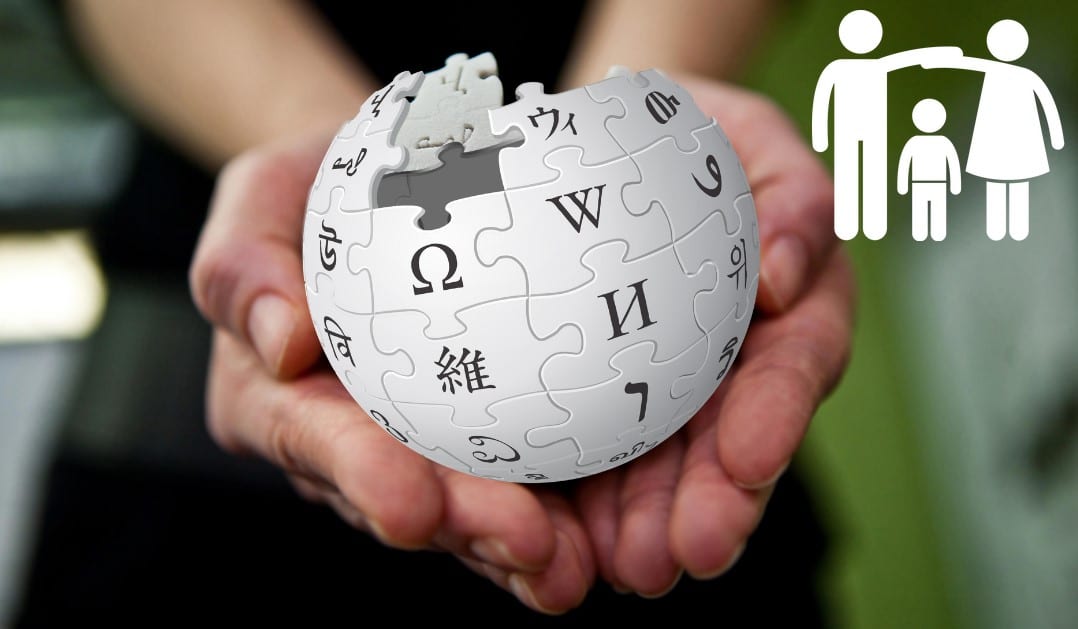
Even though Wikipedia is open to everybody, your version of MediaWiki (software Wikipedia runs on) can either a fully private wiki or a semi-private wiki. A fully private wiki requires that a person be logged in to both read and write to the wiki. A semi-private wiki restricts writing to the wiki but allows anybody to read the wiki. There are even extensions that can limit things even more to specific countries or even down to the level of particular IP addresses. It depends on how locked down you want to make the system.
Summary
History can be fun and enjoyable for a student to learn when it expands beyond the memorization of specific names and dates. Tables of the Centuries, Book of the Centuries, and Chronicle of a Century are three different ways for a student to understand history by making the history their own.










